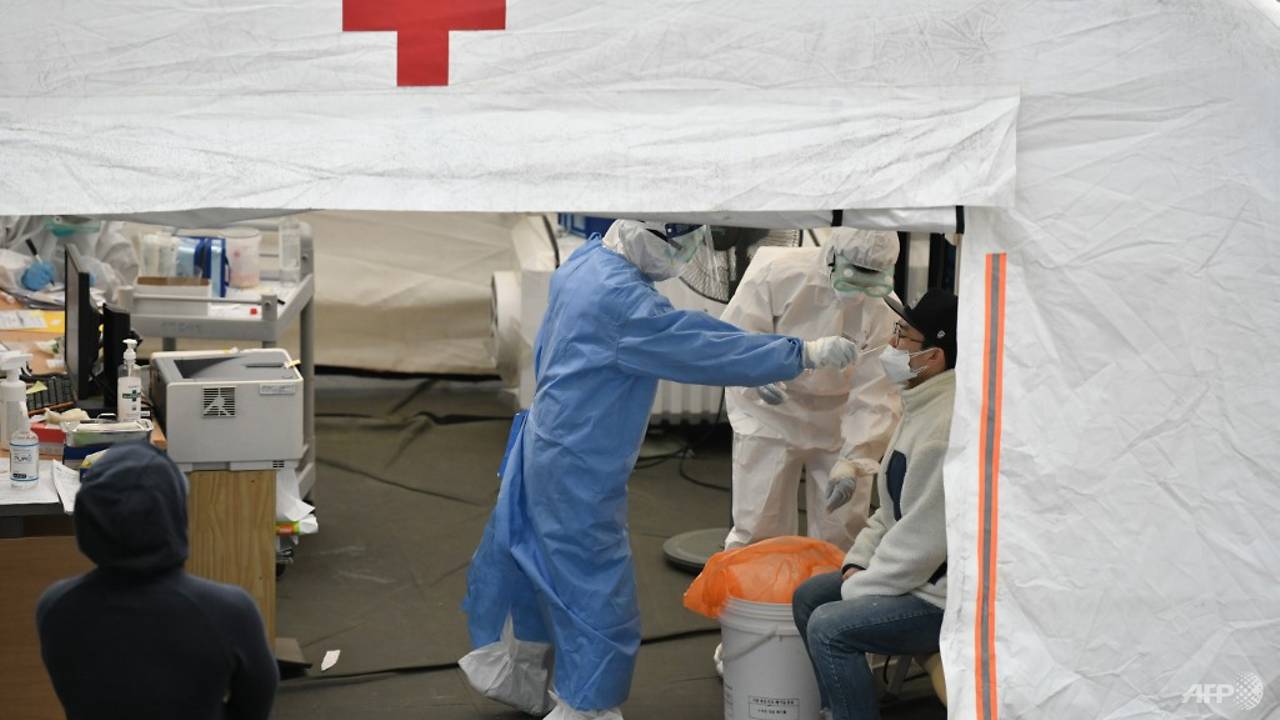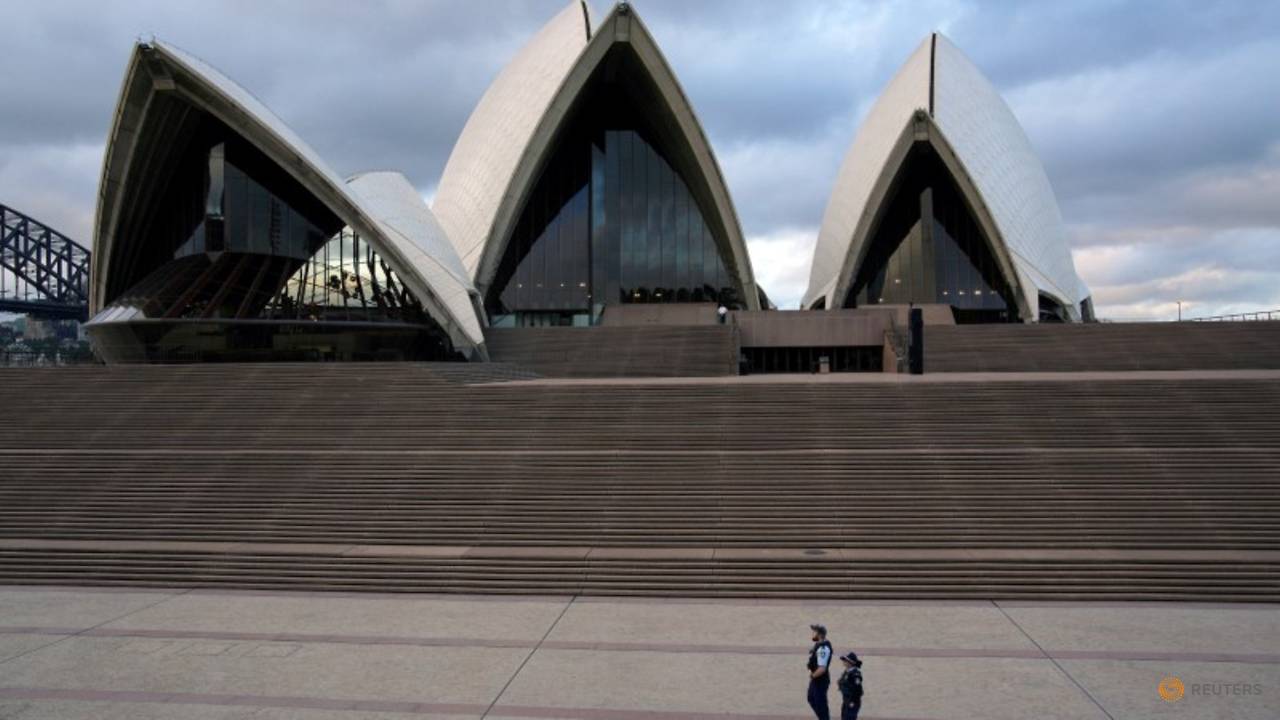
SEOUL: South Korea needs to train for potential infectious disease outbreaks worse than COVID-19 and detailed treatment guidelines, as risks of more frequent such outbreaks rise and public sickbeds remain tight, a senior government official said.
South Korea's early success to tame the novel coronavirus through aggressive contact tracing and testing has been touted by disease experts worldwide as gold standard of how to effectively control infectious disease.
Advertisement
Advertisement
Its early state intervention limited widespread community infections and helped hospitals keep sickbeds available for severely affected patients.
But its extremely low rate of public hospital beds – only 10 per cent of total – remains a potential weak spot, as the country continues to battle small but persistent outbreaks and front-line public healthcare workers suffer burnout after more than six months of treating COVID-19 patients.
"I think we will see more such disease outbreaks that are more highly transmissible and fatal," National Health Insurance Service (NHIS) President Dr Kim Yong-ik told Reuters.
"We need to be prepared by running simulation exercises on various scenarios: how to switch the existing hospitals, where to send the medical staff, or how to categorize the patients."
Advertisement
Advertisement
South Korea had the second-highest number of hospital beds, next to Japan, in 2017 with 12.3 beds per 1,000 population, double the Organisation for Economic Cooperation and Development's (OECD) average of 4.7, according to an OECD report.
READ: One in three South Korean COVID-19 patients improve with remdesivir
But public hospital beds account for just 10 per cent of total, far below most advanced countries: According to NHIS, the rate is 100 per cent in Britain, 63 per cent in France, 26 per cent in Japan and 25 per cent in the United States.
Kim said more public hospitals and staff were needed to prevent a resurgence as winter comes.
"Early state intervention helped contain the spread of the virus, but things could get worse when the winter season starts and it's very important for healthcare workers not to get exhausted before then," Kim said.
Kim Dae-ha, a spokesman for the Korean Medical Association which represents all doctors in South Korea, said the low proportion of public sickbeds and doctors has not been a problem as privately owned clinics have as much influence as the public ones.
"South Koreas efforts (to clamp down on COVID-19) have been called a success, despite a lack of public medical facilities. This evaluation proves the private hospitals and doctors are second to none," he told Reuters.
Rather than investing in doctors in specific fields for public hospitals, it is more efficient to support existing private doctors and hospitals, he added.
<a href="https://www.channel<a href=https//www.channelnewsasia.com/news/asia/south-korea-public-hospitals-infectious-diseases-covid-19-12938126>Read More – Source</a></p>_
_
__ <img src=” rel=”noreferrer” target=”_blank”>
channel news asia
channel news asia

SEOUL: South Korea needs to train for potential infectious disease outbreaks worse than COVID-19 and detailed treatment guidelines, as risks of more frequent such outbreaks rise and public sickbeds remain tight, a senior government official said.
South Korea's early success to tame the novel coronavirus through aggressive contact tracing and testing has been touted by disease experts worldwide as gold standard of how to effectively control infectious disease.
Advertisement
Advertisement
Its early state intervention limited widespread community infections and helped hospitals keep sickbeds available for severely affected patients.
But its extremely low rate of public hospital beds – only 10 per cent of total – remains a potential weak spot, as the country continues to battle small but persistent outbreaks and front-line public healthcare workers suffer burnout after more than six months of treating COVID-19 patients.
"I think we will see more such disease outbreaks that are more highly transmissible and fatal," National Health Insurance Service (NHIS) President Dr Kim Yong-ik told Reuters.
"We need to be prepared by running simulation exercises on various scenarios: how to switch the existing hospitals, where to send the medical staff, or how to categorize the patients."
Advertisement
Advertisement
South Korea had the second-highest number of hospital beds, next to Japan, in 2017 with 12.3 beds per 1,000 population, double the Organisation for Economic Cooperation and Development's (OECD) average of 4.7, according to an OECD report.
READ: One in three South Korean COVID-19 patients improve with remdesivir
But public hospital beds account for just 10 per cent of total, far below most advanced countries: According to NHIS, the rate is 100 per cent in Britain, 63 per cent in France, 26 per cent in Japan and 25 per cent in the United States.
Kim said more public hospitals and staff were needed to prevent a resurgence as winter comes.
"Early state intervention helped contain the spread of the virus, but things could get worse when the winter season starts and it's very important for healthcare workers not to get exhausted before then," Kim said.
Kim Dae-ha, a spokesman for the Korean Medical Association which represents all doctors in South Korea, said the low proportion of public sickbeds and doctors has not been a problem as privately owned clinics have as much influence as the public ones.
"South Koreas efforts (to clamp down on COVID-19) have been called a success, despite a lack of public medical facilities. This evaluation proves the private hospitals and doctors are second to none," he told Reuters.
Rather than investing in doctors in specific fields for public hospitals, it is more efficient to support existing private doctors and hospitals, he added.
<a href="https://www.channel<a href=https//www.channelnewsasia.com/news/asia/south-korea-public-hospitals-infectious-diseases-covid-19-12938126>Read More – Source</a></p>_
_
__ <img src=” rel=”noreferrer” target=”_blank”>
channel news asia
channel news asia










